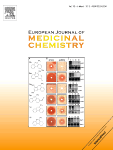Citation:
Barasch D, Zipori O, Ringel I, Ginsburg I, Samuni A, Katzhendler J. Novel anthraquinone derivatives with redox-active functional groups capable of producing free radicals by metabolism: are free radicals essential for cytotoxicity?. European Journal of Medicinal Chemistry. 1999;34 (7-8) :597-615.

Abstract:
The mode of action of antitumour anthraquinone derivatives (i.e. mitoxantrone) is not clearly established yet. It includes, among others, intercalation and binding to DNA, bioreduction and aerobic redox cycling. A series of anthraquinone derivatives, with potentially bioreducible groups sited in the side chain, have been synthesized and biologically evaluated. Their redox and cytotoxic activities were screened. Derivatives which bear a 2-(dimethylamino)ethylamino substituent, known to confer high DNA affinity, demonstrated cytotoxicity but not redox activity (beside the anthraquinone reduction). Conversely, derivatives which showed redox activity were not cytotoxic toward the P388 cell line. The results suggest that bioreduction is not the main mode of action in the cytotoxicity of anthraquinones.Publication Global ID: http://www.ncbi.nlm.nih.gov/pubmed/11278045

